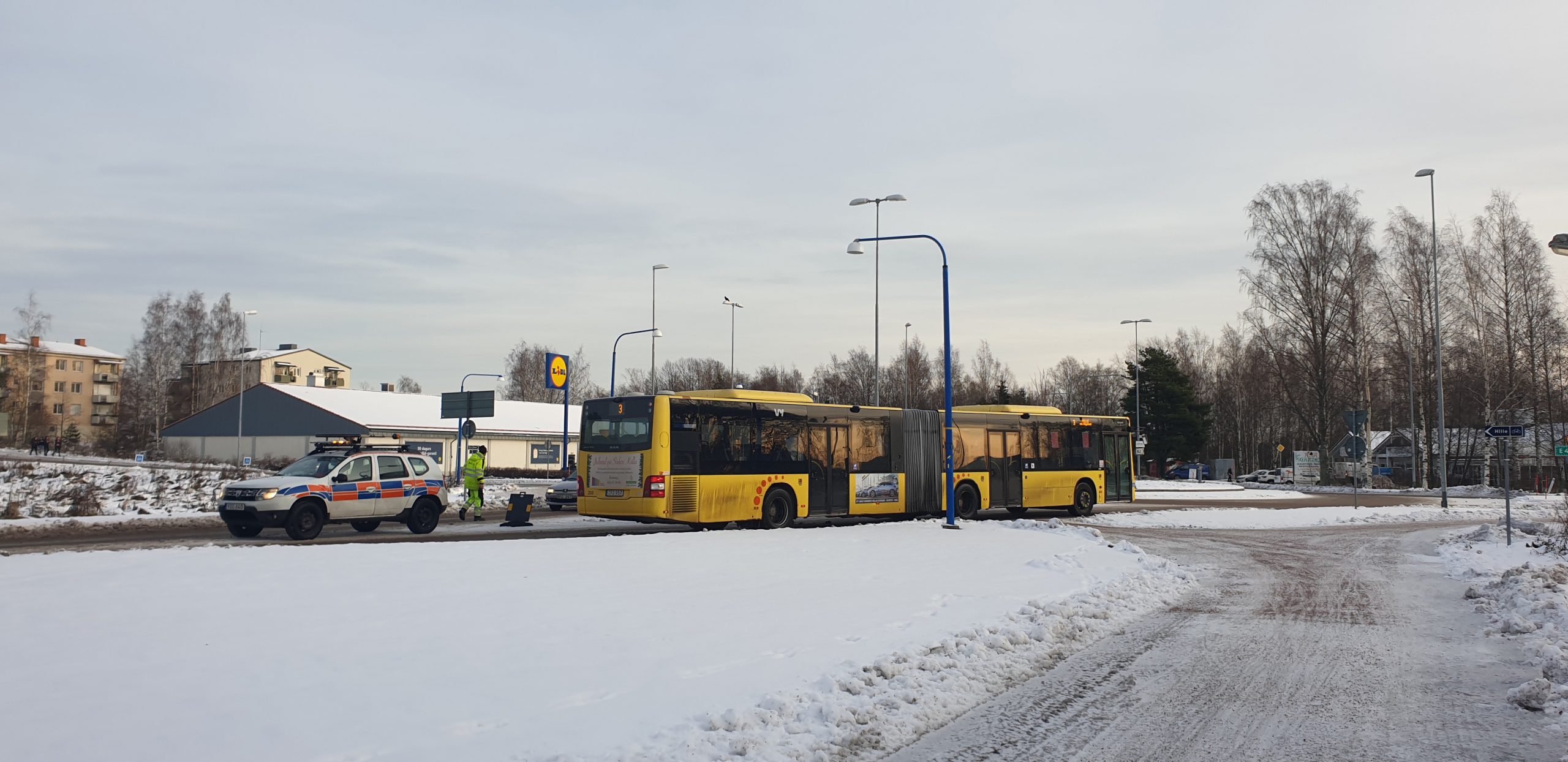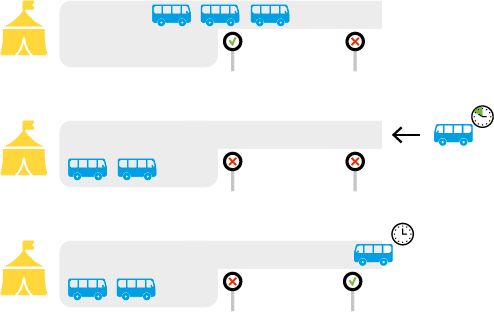
Intelligent reversible bus lane in Gävle
Gävle is a city of 70,000 residents which plays an important regional role for events: the city is home to an ice hockey stadium, a football stadium, a racecourse and a large events center. At peak moments it has proved to be a real challenge to ensure the smooth flow of traffic to and from the events area. The access road to the area is a two-way roadway with a dedicated bus lane in one direction. The single direction of traffic for buses and the large volume of vehicles has led too often to delays and congestion. The Swedish city of Gävle was struggling to manage the volume of visitors at events and sports matches in the city. TNL and Saferoad Sweden AB developed an intelligent reversible bus lane to solve the problem.
Dynamic reversible bus lane
To make it possible to handle departing and arriving buses flexibly, Gävle needed a fully automated solution involving a dynamic reversible bus lane that can be used in both directions. The reversible lane is normally set up to direct buses away from the events area. But to give returning buses access to the area, it must be possible to reverse the direction of travel on the bus lane for short periods of time – see Figure 1. The reversal must of course be safe: under no circumstances must buses be able to travel in opposite directions at the same time. Gävle must also be able to operate the reversible lane manually in unexpected situations.

Central and local
We have developed a system that operates the dynamic reversible bus lane safely and fully automatically. Our solution contains existing technology that uses central and local intelligence. The reversible bus lane solution, which has since been commissioned, is made up of the following components:
- Sensors. Radar detectors keep an eye on bus lane occupancy. The system knows when the lane is free of traffic and it is safe to reverse the direction of travel.
- VMSs. Digital route information panels placed at crucial locations display the status of the reversible lane, including a no-entry sign if applicable.
- PLCs. A PLCnext system that hosts the operating application for the bus lane has been implemented for local intelligence. The PLCnext is connected locally with the sensors and VMSs. The system is also linked with remote central operation in MobiMaestro.
- Network server. A special network server automatically maps the GPS locations of the buses on an underlying map. This information allows the server to estimate arrival times at the bus lane.
- MobiMaestro. Our traffic management system MobiMaestro provides central intelligence and central operation. On the basis of the information provided by the network server, MobiMaestro determines when the reversible bus lane will be opened for buses in the direction of the event. MobiMaestro then sends a request to the PLCnext, which processes everything locally. MobiMaestro also handles communication with users in the traffic control center and through a graphical user interface.
The system has two modes, one central and one local. In the central mode, MobiMaestro, the network server and the PLCnext work together to ensure the road is cleared on time for returning buses so that these can have immediate access. The local mode is a fallback option that can be activated in case of incidents, such as if the internet is down. In this mode, a radar loop in the road surface detects the presence of the returning bus, and the PLCnext then clears the bus lane. In this case, the bus will have to wait until the bus line is clear.
The bus lane system uses the Dutch DVM-Exchange system for communication between MobiMaestro and PLCnext. This open protocol has been used in the Netherlands for nearly a decade now to exchange traffic-related information and commands between network management systems. As far as we are aware, the Gävle project is the first implementation of DVM-Exchange abroad.

Safety guaranteed
The safety of the reversible bus lane must be guaranteed at all times. This is why the system is equipped with built-in scenarios for incidents, such as a defect sensor. Each scenario checks whether the bus lane can still function safely. If this threshold is not met, the bus lane is closed, and the default situation is restored. The operator is then notified of the status of the bus lane.
Collaboration with local partners
TNL developed this bus lane solution for Gävle together with the Saferoad Sweden. Saferoad took care of the installation work, monitored compliance with local rules and supplied the required roadside equipment, such as the DRIPs and the radar detectors including implementation and monitoring all internal communication between the equipment and PLCNext. Our contribution included the integration and operation of the various sensors and actuators, the modules in the PLCnext and MobiMaestro that are used to operate the reversible bus lane, and the integration of DVM-Exchange with the PLCNext.
In practice
Various on-site tests have shown that the system is fit for use in Gävle. The reversible bus lane is ready to manage bus traffic during events. The city expects to use the system several times a week to facilitate visitors and athletes.


